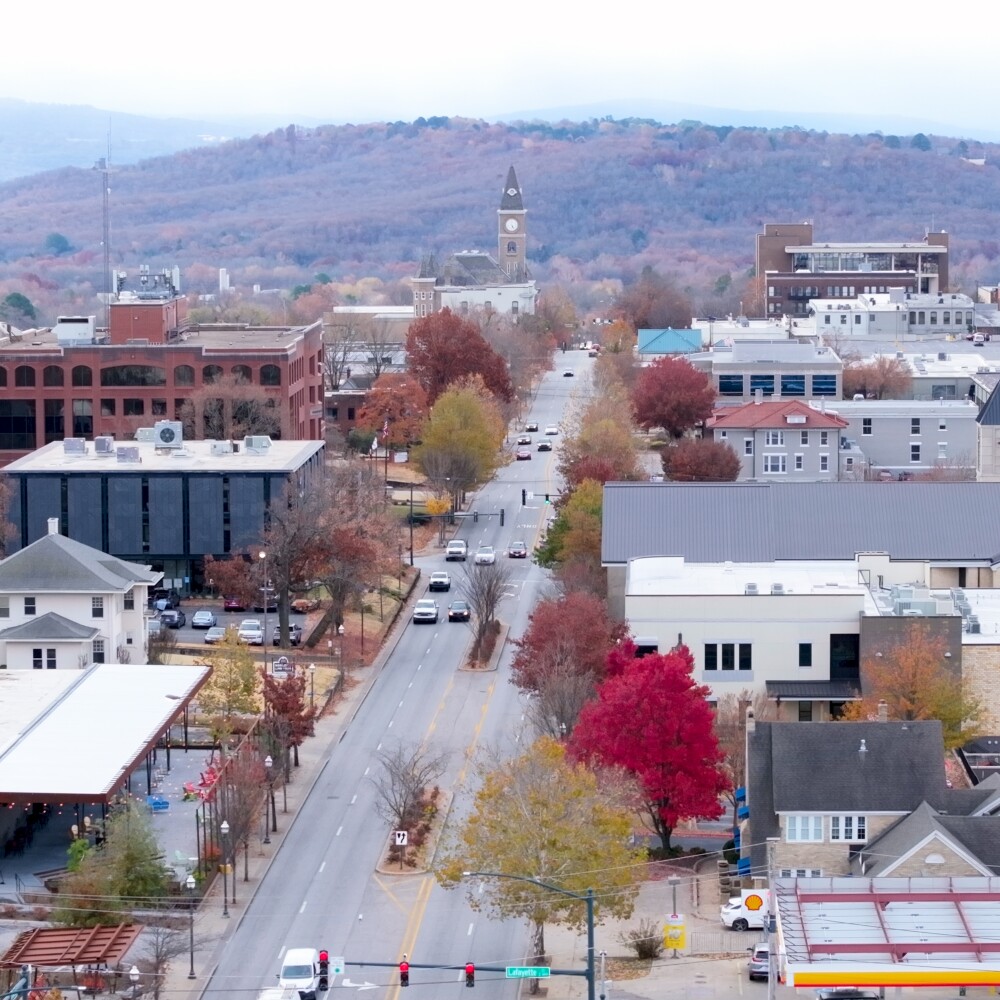
-
The Louisiana Coast is Disappearing
- The Louisiana Coast is Disappearing
- Our Economy Depends on a Healthy Louisiana Coast
- Natural and Man-Made Disasters Have Ravaged the Coast
- A Living Coast Can Protect Louisiana
- It's Not Too Late to Curb Land Loss
- A Once-in-a-Lifetime Opportunity for Restoration
- The Local Community is Ready for Restoration
- Restoration Will Revive the Coastal Economy
- Sources
- The Port of New Orleans is one of the nation’s busiest shipping hubs, supporting 380,000 jobs and generating $37 billion in economic impact per year.
- Louisiana’s commercial fishing industry lands more fish each year than any other state in the contiguous U.S.
- The Louisiana coast draws outdoor recreation enthusiasts from across the country, annually contributing more than $400 million to the economy.
On average, a football field of land disappears into the Gulf of Mexico every 100 minutes. Over thousands of years, the Mississippi River carried sediment to the Louisiana coastline, building up marshes, wetlands and new land.
But today, because of canals and levees that constrict and confine the path of the river, the sediment cannot reach the delta to replenish the eroding wetlands.
Since the 1930s, Louisiana has lost close to 2,000 square miles of wetlands, an area roughly the size of Delaware.
The Louisiana coast is an economic engine for the nation. Threats to the stability and health of the coast from land loss, rising seas, severe storms and other environmental changes put entire industries at risk.
Impacts to the health of the Louisiana coast reverberate throughout our national economy and local communities. Continued land loss threatens up to $7.6 billion a year in direct costs to the nation’s economy and billions more in potential indirect costs.
From 2004 through 2008 alone, more than 300 square miles of marshland were lost to hurricanes Katrina, Rita, Gustav and Ike. The destruction these storms brought to the region demonstrated the critical role a healthy coast plays in protecting communities. Without investments in coastal restoration and structural protection, New Orleans’ levee system will be overwhelmed by future storms and flood waters will devastate the city.
The dramatic loss of land along the Gulf Coast leaves it even more vulnerable to future storms. As the coastal buffer disappears, areas further inland will experience increased storm damage. Over the next 50 years, Louisiana could face up to $3.6 billion in costs to repair and replace infrastructure destroyed by land loss if the state takes no action to curb it. Up to $138 billion in national business, residential and infrastructure assets could be lost in just one big storm.
Just five years after Hurricane Katrina, an oil rig exploded in the Gulf of Mexico, leaking 210 million gallons of oil into the Gulf. Hundreds of miles of coastline were contaminated with oil, while Gulf wildlife and ecosystems sustained unprecedented damage.
In a region already suffering from the impacts of natural disasters, the oil spill further endangered the Gulf coast’s critical industries, from hospitality and tourism to commercial fishing.
Recognizing the loss of its coastline as an existential threat to Louisiana’s communities and economy, the state developed a Comprehensive Master Plan for a Sustainable Coast – a 50-year, $50-billion plan to rebuild Louisiana’s coast and its ecosystems.
Because protecting and restoring Louisiana’s coast is a complex problem, it requires multiple solutions that work together. The plan includes 79 restoration projects, 13 structural protection projects, and 32 risk reduction projects that will be implemented throughout coastal Louisiana. The state of Louisiana estimates that the projects outlined in the master plan will reduce expected damage to coastal communities by $8.3 billion annually.
Louisiana’s Master Plan aims to rebuild and sustain the coast through a series of restoration projects. One critical component of restoring Louisiana’s coast is creating diversions, which allow the Mississippi River to deposit its sediment in the delta and surrounding marshes as it did for over 7,000 years.
Since 2014, about 350 million tons of sediment from the banks of Louisiana’s rivers have washed out to sea. Sediment diversions involve redesigning the river's navigation channel to enable the river’s currents to mimic their natural process of transporting sand and fresh water into nearby basins to restore and maintain wetlands.
Louisiana’s Master Plan would fund 124 restoration projects, including sediment diversions, which over time would collectively build or maintain an estimated 800 square miles of land. Over the next 10 years, the plan prioritizes implementation of several large sediment diversion projects to help curb coastal erosion.
Settlements and recovery funds related to the 2010 oil spill will direct billions of dollars to Louisiana in the coming years, offering an unprecedented opportunity to achieve restoration at the scale necessary to revive the Gulf Coast.
The Walton Family Foundation and our partners and grantees are working to ensure that these funds support projects that will reverse the loss of coastal lands, restore critical natural infrastructure and rebuild a Gulf Coast that will sustain its communities for generations to come.
Businesses, local government, sportsmen, and economic development, environmental and community groups have all raised their voices to demand that the funding coming to Louisiana be used for restoration. Coastal restoration was also among voters' top priorities in the 2015 gubernatorial election that ushered in Gov. John Bel Edwards.
In one poll, 85% of Louisiana voters said that coastal restoration should be a high priority for the governor. The restoration effort is strengthened by a broad coalition of individuals and groups from every walk of life advocating for solutions that make strong scientific and economic sense.
Restoration won’t just protect the coastal environment – it will reinvigorate the local economy. The projects that will rebuild oyster reefs, rebuild the coast and prevent future land loss will also create thousands of jobs and millions of dollars in wages for the people of Louisiana. The state of Louisiana estimates that state coastal spending in future years could directly and indirectly create up to 10,300 jobs, $520 million in wages and $1.35 billion in sales each year.
2017 is the year that billions of dollars in restoration funds start flowing to the coast. This is our best opportunity in generations to secure the health of our coast and our economy for good. Restoration works — it creates good jobs and a healthy environment, strengthens our coasts against damaging storms and restores habitat that sustains the region’s special way of life.
The Walton Family Foundation is committed to continuing to support meaningful environmental restoration that protects the economies and communities of the region now and into the future.
1. The Louisiana Coast is Disappearing
Environmental Defense Fund: Restoring the Mississippi River Delta
Restore the Mississippi River Delta: Land Loss
2. Our Economy Depends on a Healthy Louisiana Coast
Louisiana's Comprehensive Master Plan for a Sustainable Coast
Regional Impacts of Coastal Land Loss and Louisiana's Opportunity for Growth
3. Natural and Man-Made Disasters Have Ravaged the Coast
Louisiana's Comprehensive Master Plan for a Sustainable Coast
Regional Impacts of Coastal Land Loss and Louisiana's Opportunity for Growth
Ocean Conservancy: Restoring the Gulf of Mexico
4. A Living Coast Can Protect Louisiana
Louisiana's Comprehensive Master Plan for a Sustainable Coast
5. It’s Not Too Late to Curb Land Loss
Louisiana's Comprehensive Master Plan for a Sustainable Coast
Restore the Mississippi River Delta: Wasted Sediment
6. A Once-in-a-Lifetime Opportunity for Restoration
Louisiana's Comprehensive Master Plan for a Sustainable Coast
7. The Local Community is Ready for Restoration
Louisiana Coastal Issues Poll 2015
8. Restoration Will Revive the Coastal Economy
Regional Impacts of Coastal Land Loss and Louisiana's Opportunity for Growth
Public Affairs Research Council of Louisiana: The New Louisiana Purchase




